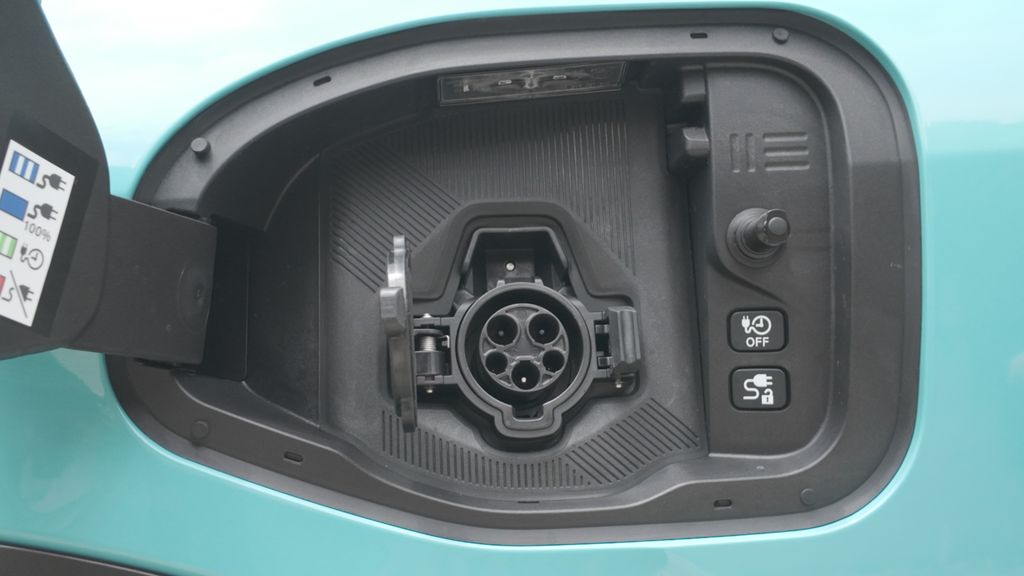- How charging works on the new Nissan Leaf:
- The Tesla (NACS) plug on the passenger side of the car is used for fast-charging.
- The J1772 plug on the driver’s side is used for slow and Level 2 charging on conventional chargers.
- If you want to slow-charge at one of Tesla’s Destination chargers, you need an adapter for the J1772 plug.
- If you want to fast-charge at a conventional station like Electrify America, you need an adapter for the NACS plug.
The American EV landscape is caught between two disparate charging connectors. The Combined Charging System (CCS) and its slow-charging component, the J1772 plug, are already everywhere.
But the entire industry is transitioning to Tesla’s North American Charging Standard (NACS). That’ll surely be a better solution in the long term, but there’s one hang-up: What do we do in the meantime?
Right now, the vast majority of non-Tesla EV chargers use CCS or J1772 plugs. Tesla Superchargers are great, but they weren’t designed for other vehicles, leading to weird issues. Plus, if you already have a home charger from a previous EV, are you going to need an adapter at home?
So which do you choose? In both Mercedes’ and Nissan’s case, the answer appears to be both.
The NACS port on the 2026 Nissan Leaf.
Photo by: InsideEVs
Both the upcoming Mercedes CLA EV and the 2026 Leaf will get both NACS and J1772 plugs. I’ve already given away the catch, though. The J1772 port is for slow-charging only. If you want to use a CCS charger, you’ll need a NACS to CCS adapter. Yet that might not be the only plug you’ll need.
Because, as Nissan confirmed to InsideEVs, the NACS port will not support slow charging. The NACS port will only support direct current (DC) connections. That’s easier for Nissan to design, as the car doesn’t have to detect the difference between an AC and a DC power source. They go to separate ports, and if you plug a Tesla-style slow charger into the Leaf, it’ll just warn you that it won’t work.

The J1772 charging port on the 2026 Nissan Leaf.
Photo by: InsideEVs
That’s going to be a bit confusing for users. They’ll show up at a hotel or public lot with a Tesla-style Level 2 Destination Chargers. They’ll plug it in, see it fits perfectly, and then, oops, error message.
If there’s a J1772 outlet, problem solved. But if a Tesla Level 2 charger is your only option, as it was at multiple hotels I called during my Bryce/Zion National Park trip, too bad.
Worse still, the problem will get worse, not better. As the rest of the industry transitions to NACS, most are opting for single charging ports that use NACS for AC and DC connections. All other connections require an adapter. That’s annoying in the short term, but it will fade away as the entire infrastructure adopts NACS as its only plug type.

55
Source: Nissan
When that happens, Nissan Leaf and Mercedes CLA buyers will have to carry adapters long after the rest of us have moved on. It’s an imperfect solution, in an imperfect time.
Contact the author: Mack.Hogan@insideevs.com.
Read the full article here


